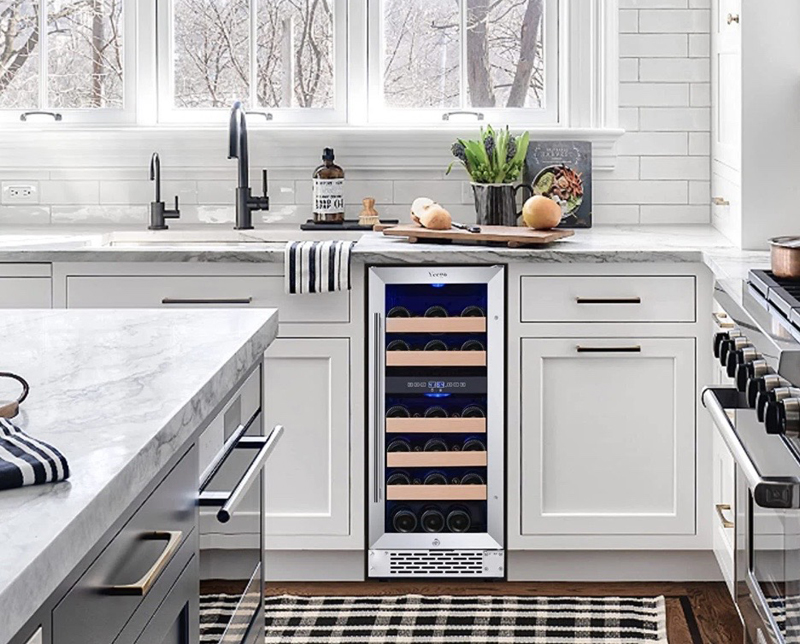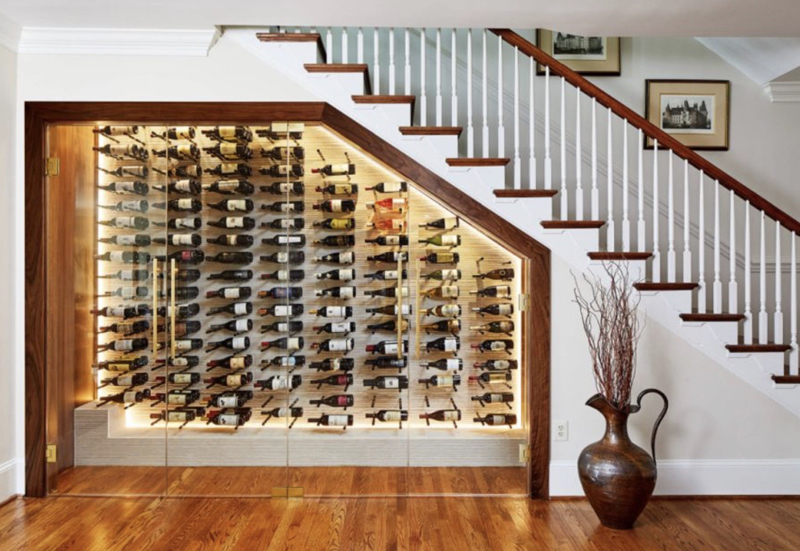From a mini fridge to a large cellar, find your full-bodied wine storage

 (Mar. 7, 2023) — Wine is a beautiful thing. And how you store it should be just as distinctive as the wine itself.
(Mar. 7, 2023) — Wine is a beautiful thing. And how you store it should be just as distinctive as the wine itself.
Beyond a wine refrigerator, feasible storage solutions could be in a coat closet or under the stairs. With proper planning, basic functional storage can become dazzling.
Wine refrigerators don’t have to be mini. Some are just as big as full-sized refrigerators. Wine refrigerators come in many size configurations that can be incorporated into most existing or new kitchen layouts.
Examine available cabinet space
When adding a wine refrigerator into an existing kitchen, find a cabinet that you can alter to accommodate your needs. Replacing your trash compactor with a drink refrigerator is a great way to not only use an existing cabinet opening, with a previously installed electrical outlet inside, but also remove a somewhat dated appliance with a more functional appliance for your wine.
Regardless of your trash compactor manufacturer, you should be able to find a drink refrigerator that will take up the existing space and slide right in.
Finding an existing cabinet in your kitchen to accommodate one of these drink refrigerators would be exciting, but if you don’t have the space inside your kitchen, expand the search in your home.
Repurposing a closet

Coat or linen closets are handy for coats and things, but consider emptying out the closet, moth balls and all, and installing a wine refrigerator. Of course, you must be attentive to location. I wouldn’t recommend positioning a wine refrigerator next to your front door, but a closet near your garage, or just steps from your kitchen in an unassuming location – where you have good access when entertaining, works out nicely.
Using an existing cabinet nook or closet near your kitchen is a great way to introduce a wine refrigerator as these spaces should be easy to manipulate. You may also want to take things a bit further and create larger storage areas for your wine. Look under the stairs, create a wall of wine storage in your dining room, or for those building new, perhaps a basement with a naturally cooled wine room to house your many bottles of bliss.
Wine storage under a staircase can be functional and decorative. That space is like a tiny storage bonus. Consider a decorative glass door that leads to your wine storage with decorative shelving, lighting and a mechanical cooling system to keep your investment drinkable.
The wall says it all
Walls of wine in your dining room can be an over-the-top focal point. This works if you have a full wall in your dining room that isn’t doing much – no windows or doors – and you have some good depth.
These walls are usually floor to ceiling glass, with one or two doors to give you access to your wall of bottles. Shelves line the back wall, taking advantage of the height, while LED lights illuminate the entire glass structure, and a mechanical cooling system keeps everything temperature happy.
It will definitely require the expertise of a contractor to help you through the various steps of construction, but in the end, wow. A showstopper.
Working with your favorite contractor, design professional or wine storage expert is a great way to get started on which cabinets or closets could be altered, finding substantial space under a staircase or transforming a living space into a wine cellar.
Wine refrigerators are electrical appliances that will need some sort of ventilation, as well as dedicated electrical fittings. Doing your due diligence on appliance specifications is essential.
Storing wine can be basic or a little over the top. Your only prerequisites are finding the space you can allocate and your budget.
Wine refrigerators fitted into existing cabinets and closets are straightforward, because they are self-contained: a glass door, a set amount of storage and a built-in cooling system. If you are looking for something beyond this, dare to go big and build the wine cellar of your dreams.

Jennifer Leischer
Jennifer Leischer is the owner of J. Designs Interior Design based in Clayton, CA. Combining a public relations degree from California State University, Chico, with further studies in design and interior architecture at the University of California, Berkeley, Jennifer began her career as an interior designer in 1998, working for various firms in San Francisco and Orinda, and Denver, Colorado. She describes every designing moment, throughout her career, as a wonderful tutorial about the importance of relationships, open communication, and getting down to the basics of functional, yet stylish, living spaces.
